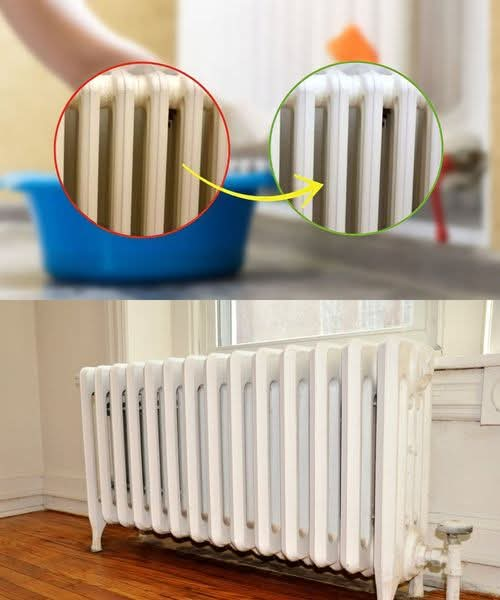1. Dust and Prep the Area: Before diving into the cleaning process, start by dusting off any surface dirt or debris from the radiator. Use a vacuum with a brush attachment or a microfiber cloth to remove dust and cobwebs from the radiator’s surface and between the fins. This will help prevent dirt from rubbing into the metal while cleaning.
2. Clean with Mild Soap and Water: Mix a small amount of mild dish soap with warm water. Dip a cloth or sponge into the soapy water and gently scrub the radiator’s surface. Focus on areas that seem particularly grimy. Rinse the cloth frequently to avoid pushing dirt around. This step helps remove surface-level grime and prepares the radiator for a deeper cleaning.
3. Tackle Yellowing with Baking Soda and Vinegar: For yellowing areas, make a paste by combining equal parts baking soda and white vinegar. Apply the paste to the yellowed sections of the radiator. Let it sit for 10-15 minutes to allow the mixture to break down the yellowing. After the paste has had time to sit, use a steel wool pad or a stiff-bristled brush to scrub the paste in a circular motion. The abrasiveness of the baking soda and the acidity of the vinegar will help lift the yellow discoloration.
4. Rinse and Dry: Once the yellowing is gone, rinse the radiator thoroughly with clean water to remove any leftover cleaning solution. Use an old towel or rag to wipe the radiator dry. It’s essential to dry the radiator completely to prevent water spots and rust from forming.
5. Restore the Shine: If the radiator still looks a bit dull after cleaning, apply a small amount of cast iron cleaner or a mild metal polish to the surface. Use a microfiber cloth to buff and polish the radiator, bringing back its natural shine. This step will enhance the finish and provide a protective layer against future grime buildup.
6. Address Stubborn Paint or Rust: If your radiator has old, stubborn paint or rust buildup, you might need to use a paint stripper to remove the paint. Follow the instructions on the paint stripper and wear protective gloves. Once the paint is removed, treat any rusted areas with a rust remover or use fine steel wool to scrub away the rust. Once cleaned, you can reapply a fresh coat of radiator-safe paint if you prefer the painted look.
Serving and Storage Tips:
Please Head On Over To Next Page Or Open button (>) and don’t forget to SHARE with your Facebook friends.



Yo Make również polubił
Quick & Easy Tuna and Potato Dinner
Pasta with Cheese and Green Leaf Sauce, Topped with Shrimp
Cheesecake Fruit Salad: A Dreamy Dessert Salad for Every Occasion
Mexican Shrimp Cocktail: A Refreshing and Zesty Seafood Delight